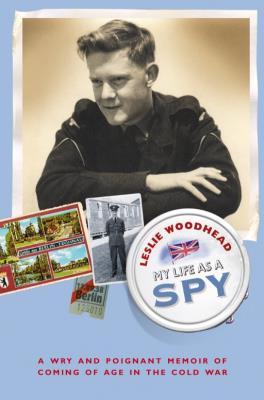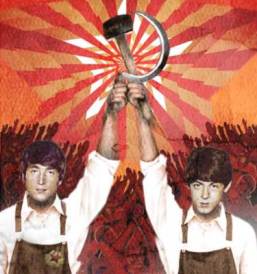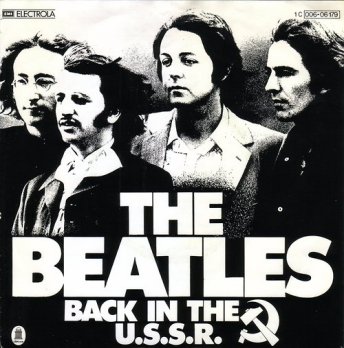There are “oddities” surrounding many of the Beatles official photographers throughout their legacy. In this first installment of what I plan to be a series of articles dealing with the official Beatles photographers, I will be highlighting one of the earliest-known Beatles capturers;
Leslie Woodhead

Leslie Woodhead captured the earliest known footage of the Beatles playing live at the Cavern Club August 22, 1962. The Beatles had since signed on with Brian Epstein as their manager (as of December 1961) and he had already changed their look from leather and grease teddy boys to the suited good-ol’ boy image by this time period. Ringo Starr had just joined the band 8 days earlier, upon the firing of Pete Best. Woodhead’s now infamous footage is below for your viewing enjoyment.
Here, you are witness to John, Paul, George and newly signed Ringo perform “Some Other Guy” to an audience full of surprisingly somewhat-calm fans, filmed by then rookie TV producer, Leslie Woodhead. A large diversion from the Beatlemania fanatics they would soon be accustomed to less than 2 years later.
The film has been under scrutiny for decades. Despite being filmed with state-of-the-art television cameras, the film appears very grainy. The audio is muffled, and out of sync with the footage. Some Beatles historians have speculated that the audio was actually re-taped several weeks later, and then dubbed over the original film, causing the discrepancy. Due to its quality, the footage was shelved until late 1963 after the Beatles had become famous.
On the surface I suppose, there doesn’t seem to be anything odd about this video or its film crew- who just happened to be filming the underground music scene of Liverpool during this time in a tiny, dank and dark club (no wonder the film is such poor quality), but let’s dig in a bit further shall we?
During this time, the Cold War was in full effect. The US and the U.K. engaged in some very heavy conflicts with the Soviet Union- the Bay of Pigs incident just on the horizon. It is no secret that espionage ran rampant between Britain and the Soviet Union during this time, before and ever since. Romanticized by Hollywood and other fictional films and books, espinoge was anything but romantic for those actually taking the risk of passing sensitive information from the Soviet Union to Britain and vice versa. Perhaps most well known acts of espinogue that were outed and exposed were the “Cambridge Five” which were explained to the public as a spy ring of British citizens recruited by the Soviet Union directly out of Cambridge university. The Cambridge five were never arrested even after exposure in the early 1960s.
When Soviet intelligence officer Arnold Deutsch met with Cambridge University graduate Harold “Kim” Philby in 1934, he came right to the point: “We need people who could penetrate into the bourgeois institutions. Penetrate them for us!” Philby eagerly agreed, beginning a lifelong affiliation with Moscow.
The freshly-minted spy also identified other potential recruits, and in short order, Deutsch managed to sign up four more Cambridge men: Donald Maclean, Guy Burgess, Anthony Blunt, and John Cairncross. All were dedicated communists and demanded no financial compensation for their espionage services. In time, the Soviet strategy of recruiting young, disaffected members of the British elite would yield rich rewards.The Cambridge Five quickly obtained key positions in the British government and intelligence apparatus, including SIS (foreign intelligence), MI5 (domestic security), and the Foreign Office. Indeed, Philby’s name was floated as possible director of SIS. Over the next couple of decades, the Five did immense damage to British and Western security. Through Cairncross, Moscow learned of Anglo-American efforts to build an atomic bomb in 1941. Maclean and Burgess, both working for the Foreign Office, gave the Soviets documents of inestimable value on Allied strategy in the Korean War. And as liaison between SIS and U.S. intelligence in Washington, Philby knew of, and betrayed to Moscow, project VENONA, the American effort to break encoded Soviet diplomatic messages.
Indeed, it was VENONA that brought down the Five. As Philby learned the Americans had decoded a Soviet message that referenced Maclean, he warned the latter through Burgess. But when Burgess and Maclean precipitously defected to Moscow in 1951, suspicion was cast on the remaining three. Philby and Cairncross were forced to retire. Cairncross moved to southern France while Philby joined his fellow spies in Moscow in 1963. Blunt eventually confessed against a grant of immunity and stayed in England. The authorities’ reluctance to prosecute any of the Five has been attributed to a lack of hard evidence as well as distaste by the British upper class to confront “their own.”
Excerpt from:
THE CAMBRIDGE FIVE
Spies with no regrets.By Thomas Boghardt
The Cambridge five, which are presumed to actually be many more than 5, had successfully infiltrated British Intelligence since the 1930s. In 1962, when the Cavern Club footage was filmed, this ring was still active and operating covertly through the cold-war. You may be saying to yourself now- “yeah yeah yeah, but what has this got to do with Woodhead and the Beatles?” Well- as espinoge typically goes, I have only speculative “evidence”, however the information is indeed quite interesting in this regard.
Leslie Woodhead studied English at Cambridge university, and during WWII worked as a spy for British Intelligence. His (admitted) assignments included listening in on Soviet transmissions in Berlin of Soviet pilots flying in and out of east Germany. This implies that Mr. Woodhead was fluent in English, German, and Russian. Quite an asset in my opinion. Spies don’t typically reveal their assignments to the public- so the fact that Leslie Woodhead wrote a book on his experiences in espinoge is a bit of a head-scratcher.

From this, we can assume one of two things, either Mr Woodhead was a “mini-spy” not really regarded as a classified agent, simply talking about his insignificant time decoding Soviet transmissions during the war, or he is telling only pieces of the story, not actually giving out extravagant details regarding his time in British Intelligence. I tend to swing towards the latter. Interesting to note here, after the war- Leslie Woodhead pursued a career in filmmaking. Other identified individuals from the “Cambridge five” also pursued carriers in filmmaking and journalism allowing them access to otherwise restricted areas of the world. In the following interview, Mr Woodhead used some interesting dialogue when describing his time as a spy as well as his pursuit of filmmaking. Remarking “the first assignment they gave me was to film an up-and-coming band out of Liverpool-” which of course ended up becoming the world famous Beatles mere months after his film was recorded. Who gave him this “assignment” is undoubtedly Granada television, whom he worked for at the time but the correlation is quite interesting.
Leslie Woodhead in future “assignments” in filmmaking made many documentaries involving the counter-culture of the 1960s and British foreign relations. Among these were his films Invasion, about Soviet invasion and the Prague Spring of 1968, and Strike which deals with the rise of Solidarnosc in Poland. In 1999 his documentary film A Cry From The Grave, which documents the atrocities of the Srebrenica massacre, won awards at four film festivals. He has also made films about Osama Bin Laden, 9/11 , the American missile defense program, a Rolling Stones documentary featuring their concert in Hyde Park and perhaps most appropriately a book and film released in 2009 “How the Beatles rocked the Kremlin”.

In his 2009 documentary “How the Beatles Rocked the Kremlin”, Mr. Woodhead explores the impact of the Beatles within Soviet Russia, where clandestine Beatles records were outlawed, and their Russian fans risked regression if caught with a smuggled copy of a Beatles record. They were allowed nowhere near the iron curtain of the USSR, and for good reason really- they were British, and British intelligence may have been involved in their dizzying climb to the top… Perhaps. Celebrities have been documented to be used in Intelligence previously (like in WWII), so it is no surprise the Kremlin wanted nothing to do with the Beatles. Either way, the documentary is filled with footage of Soviet Union citizens in the time period, smuggling in copies of Beatles albums copied onto X-Ray prints to avoid detection. A great detail is given to underground secret Beatles-enthusiasts, and Woodhead even goes as far as to claim the iron curtain may never have fallen without the Beatles and their influence on the kids of the Soviet Union. Calling “George, Paul, John and Ringo four of the most effective British weapons”. One may wonder how Woodhead himself obtained the footage of Soviet Russia as he did back in those days….
The music of John, Paul, George, and Ringo played a part in waking up an entire generation of Soviet youth, opening their eyes to seventy years of bland official culture and rigid authoritarianism. Soviet leaders had suppressed most Western popular music since the days of jazz, but the Beatles and the bands they inspired-both in the West and in Russia-battered down the walls of state culture. Leslie Woodhead’s How The Beatles Rocked the Kremlin tells the unforgettable-and endearingly odd-story of Russians who discovered that all you need is Beatles. By stealth, by way of whispers, through the illicit late night broadcasts on Radio Luxembourg, the Soviet Beatles kids tuned in. “Bitles,” they whispered, “Yeah, Yeah, Yeah.” – See more at: http://www.bloomsbury.com/uk/how-the-beatles-rocked-the-kremlin-9781408840436/#sthash.w6Yejxpe.dpuf

Making the recording of the Beatles song “Back in the USSR” in 1968 quite interesting in this context. Oddly, exactly 6 years after the cavern club footage was filmed by Woodhead, August 22nd, 1968 the Beatles began recording “Back in the USSR” for the white album, and incidentally- as fate would have it, Ringo temporarily quit the band during these recording sessions, he didn’t return for more than 2 weeks. Surely Paul McCartney (the main song writer of the track) would have known this song might just make a few anti-commies a bit perturbed. Did he care? Seems he didn’t really. And why should he? The Beatles could do no wrong… As long as they didn’t say anything bad about Jesus… (Haha).

From wiki:
Like “Revolution” and “Piggies”, “Back in the U.S.S.R.” prompted immediate responses from the New Left and Far Right, who claimed the group were “pro-Soviet”. As further evidence of the Beatles’ supposed “pro-Soviet” sentiments, the John Birch Society magazine cited the song. The line “You don’t know how lucky you are, boys” left many anti-communist groups speechless.
Perhaps I am grasping at straws here, but it seems to me the timing of all this is quite odd, and possibly quite significant. Were the Beatles used for British intelligence operations? Well I think they were- perhaps unwittingly. Perhaps not unwittingly at all- I just can’t be sure. I will just continue to log these “Strange Beatles coincidences” here in my blog until perhaps one day, when enough information is revealed, we can have a clearer image of the Beatles untold legacy as it really happened- and not the sugar coated version of what we get officially now. And speaking of sugar-coated versions; as a final thought, I leave you with a song written by John Lennon in which he described himself as;
“The song ‘Imagine,’ which says, Imagine that there was no more religion, no more country, no more politics is virtually the communist manifesto, even though I am not particularly a communist and I do not belong to any movement. You see, ‘Imagine’ was exactly the same message, but sugar-coated. Now ‘Imagine’ is a big hit almost everywhere; anti-religious, anti-nationalistic, anti-conventional, anti-capitalistic song, but because it is sugar-coated it is accepted. Now I understand what you have to do” -John Lennon
Just a bit of food for thought until next time, when we explore more Beatles photographers (such as lady Linda McCartney, Astrid Kirtcherr and Robert Whittaker). Thanks for reading! And as always, comments and critiques are sincerely encouraged. This and all my articles are opinions only- remember to always “Think For Yourself“.



Thanks for the good advice Diz. An excellent essay. I don’t know how to apply it as yet but I’ll tuck away in my memory and perhaps its significance will emerge. Really nice work.
LikeLiked by 1 person
I see I already commented on this piece. I found it more informative and useful with this reading. It’s a nice direction that can be very productive. Get below the sugar to the nitty gritty. Nice work, Diz.
LikeLiked by 1 person
I’m reminded of a quote by McCartney circa 1968 on the announcement of the new ‘Apple’ corp:
“We’ve got all the money we need. I’ve got the house and the cars and all the things that money can buy. So instead of trying to amass money for the sake of it, we’re setting up a business with a social and cultural environment where everyone gets a decent share of the profits. I suppose it’ll be like a sort of Western communism.”
LikeLike
Hi I think Paul McCartney is a twin and the other twin is a girl .I think they shared the role
LikeLike